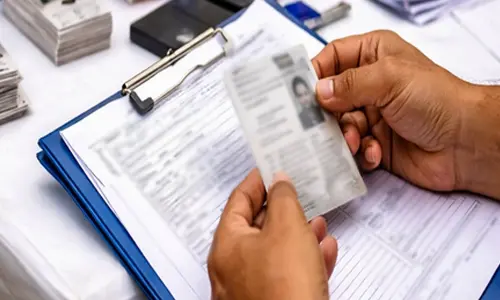The post-poll question

Madhusudhan: The Post-Poll Question, Sensex has sent investors into a tizzy; rupee has strengthened further US President Barack Obama has signaled his administration’s readiness to work with a new government (obviously Modi) in New Delhi.
Sensex has sent investors into a tizzy; rupee has strengthened further; US President Barack Obama has signaled his administration’s readiness to work with a new government (obviously Modi) in New Delhi. All this happened in less than 24 hours after the exit polls pointed out to an imminent BJP victory on Monday evening. As the national and state-wise tallies of principal parties had started flashing on TV channels, followed later by in-depth discussions and analysis of opinion poll results, the just-concluded last phase of the general election got a shot in the arm to enliven the scenario.

True, no two exit polls have given the same number of seats to any party; in some cases, the margin of error is too wide or too narrow, making us suspect the very nature of opinion polls in a country as vast and diverse as India. However, despite varying numbers, differences in methodology and the number of voters who had responded to the questionnaires prepared by the polling agencies with presumable honesty, the exit polls were unanimous in their verdict: The rout of Congress.
It’s not unexpected. Even before the long election schedule was announced, all the poll pundits had seen 2014 as Congress Waterloo. If Monday’s vox populi confirmed what was being said all along, we have to wait for less than 50 hours to know officially the fall of Congress and the rise of saffron party. What would be interesting, however, is to know the number of parliamentary seats the Grand Old Party has lost and by what margin it hit the bottom. Again, exit polls differ in their estimations, with some numbers making Congress score a bit respectable and others disgraceful.
Nevertheless, skeptics of exit polls see a flicker of hope at the end of dark tunnel in the form credibility. Are they credible? After all, in the last two previous general elections, psephologists had proved wrong and they had miserably failed in gauging the voters’ mind. Though pollsters insist that their methodology is scientific and theoretically accurate and perfectly works in Western democracies, there seems to be an inexplicable gap between method and application as far as India is concerned.
While the BJP, its allies and millions of party workers have been jubilating over the exit polls as if they have the final word, international agencies are waiting for the May 16th poll result before jumping onto the bandwagon and chant NaMo mantra. For instance, Credit Suisse said, “exit polls showing BJP and its allies headed for a majority still reveal a range of high uncertainty." The investment bank pointed out that “while national totals are within a relatively narrow range, the state numbers that add up to those totals vary widely. This suggests high measurement error margins."
Despite reservations about the accuracy of exit polls in the country, the overall sentiment is buoyed for the simple reason that there would be a change of guard in New Delhi – at last. This is reflected more in market reaction and some have already started worrying about the runaway Sensex rally. The industry and investors see a superman on the horizon descending on the scene to revive the economy by pulling out all the stops. The much vilified Gujarat model during electioneering is gaining currency even before the BJP-anointed prime ministerial candidate Narendra Modi took office and named his key aides.
It’s not just industrial conglomerates and big and small businesses, millions of Modi fans in the country and outside of it have pinned high hopes on him. He is seen as a messiah since Modi has built up an image larger than himself during his campaign across the country. Daring the opposition and baring its often uncharitable remarks about his personal life and his past, he stood like a rock and promised deliverance. Now, he has to live up to that image he has created in popular imagination once he takes over the country’s reins as it is widely expected he would in the next few days.
The problem with populism is people expect immediate results and quick fixes for every problem the nation and individual is facing. Modi, as Gujarat Chief Minister, is lording over a homogeneous population which will not be the case once he moves to Delhi. Not only his tasks multiply but also his headaches with allies, old and new, and daggers-drawn opposition that could slow down his pace of movement. In effect, Modi will run the risk of rivals and voters turning the tables on him once the victory euphoria dies down.
His tactics to maneuver through difficult situations are well known. But the speed with which he will be able to clean up the rotten system will spell his success in the coming months. That will not be easy for a person with a lot of baggage stamped “fascist, Hindu fundamentalist, Butcher of Gujarat Muslims, etc” and branded communal with roots in RSS that is said to be preparing for back seat driving of a Modi-led government.
Even if one assumes that he will lead a right of centre path, making clear of controversies, the kinds of allies the coalition will have make all the difference. If some exit polls are to be believed, BJP will have a clear majority on the expectation that fence-sitters and independents will jump into the party lap for spoils of power. Fringe parties could hold the key if the BJP fails to cross the threshold 272 mark. Will it make or not is a billion people question on which hinges the future ofIndia.
















